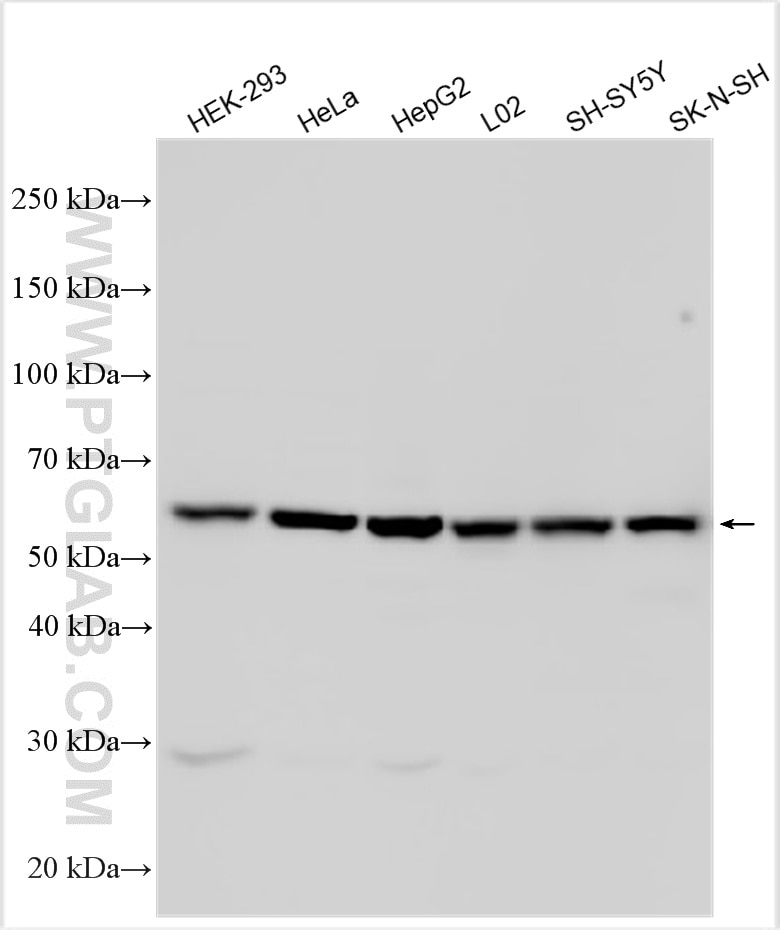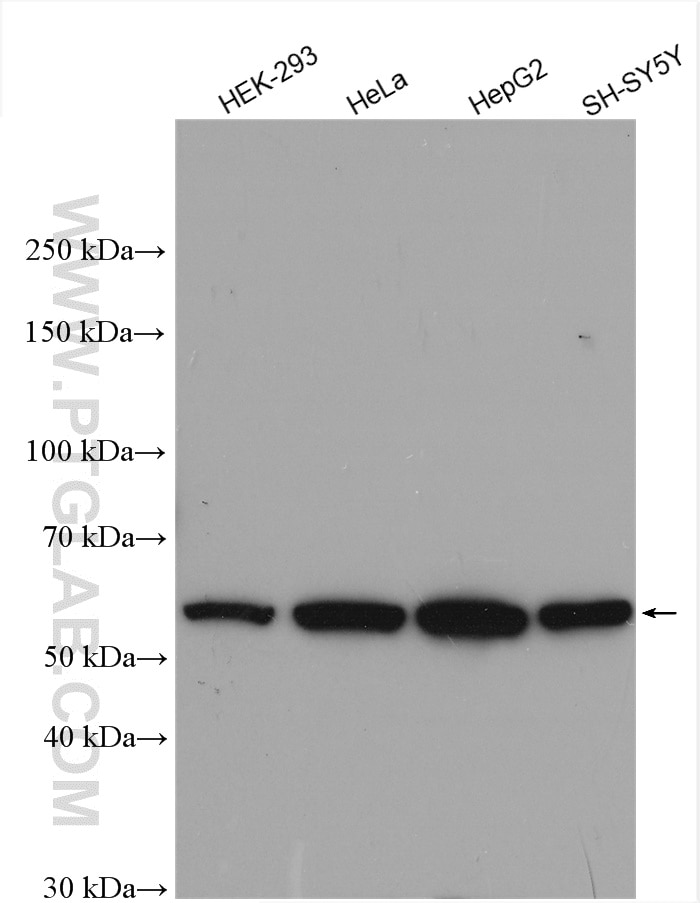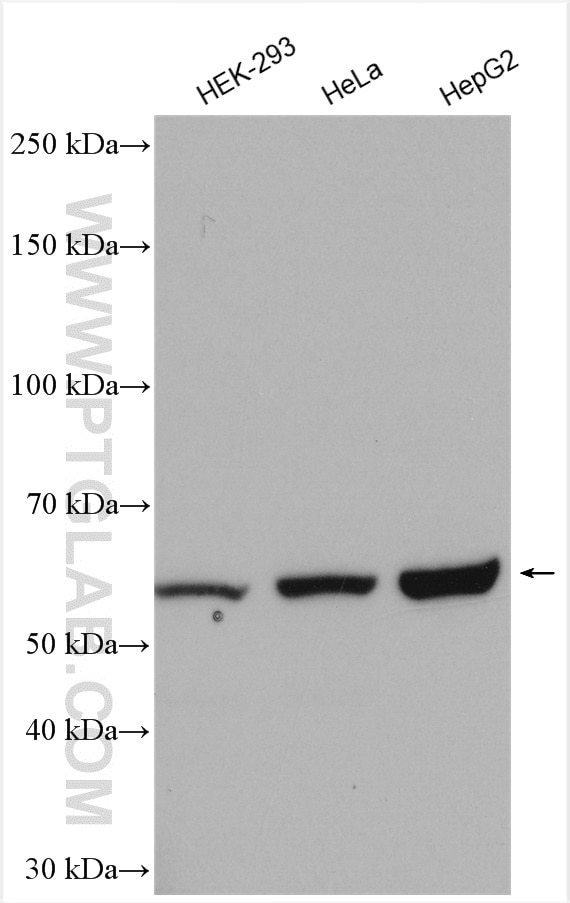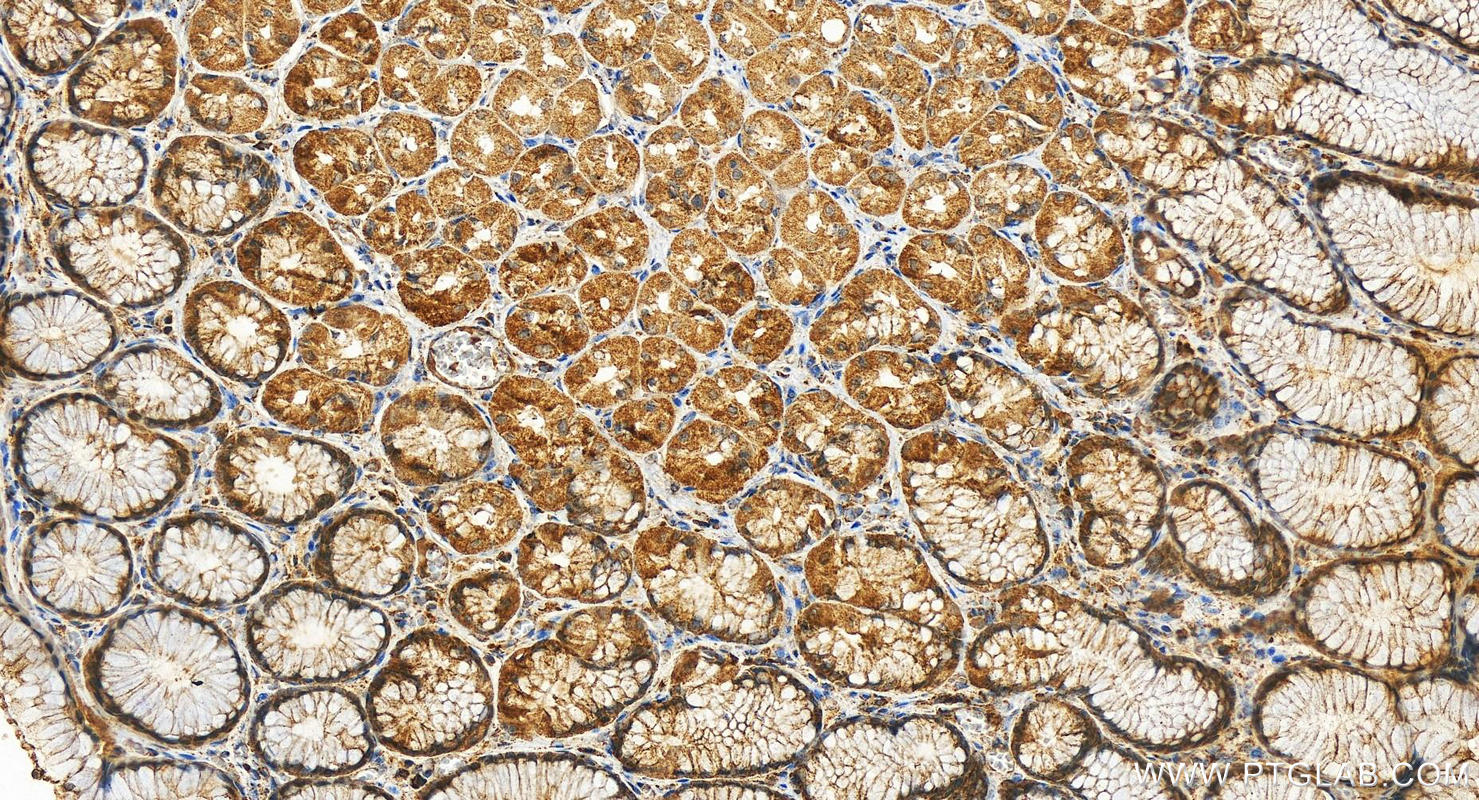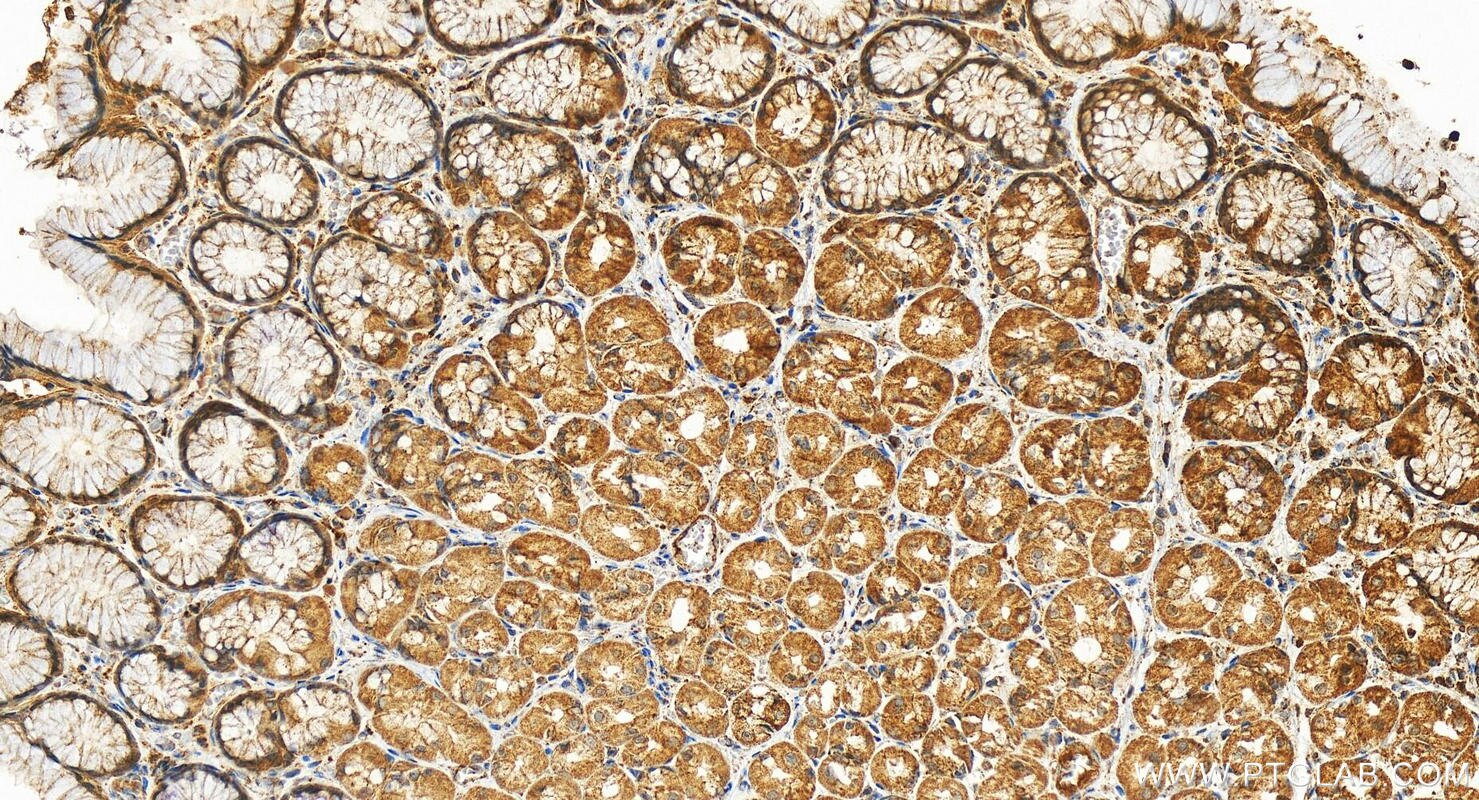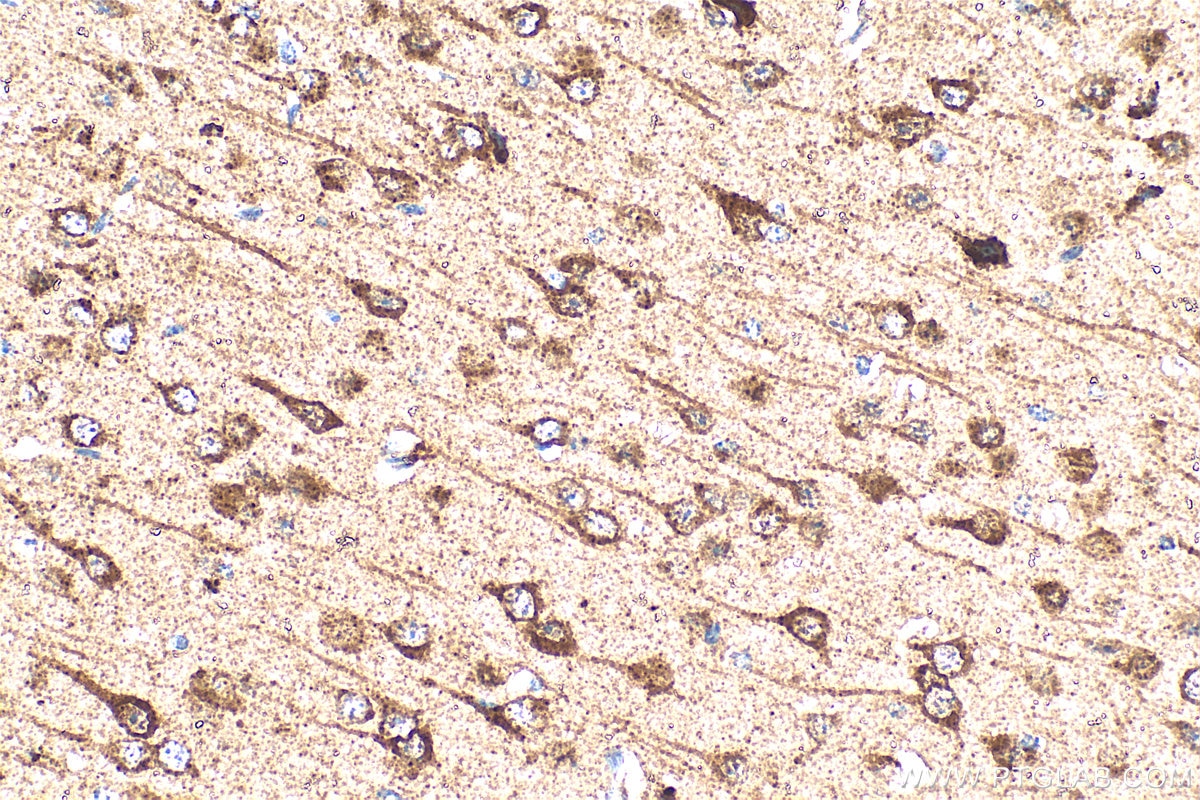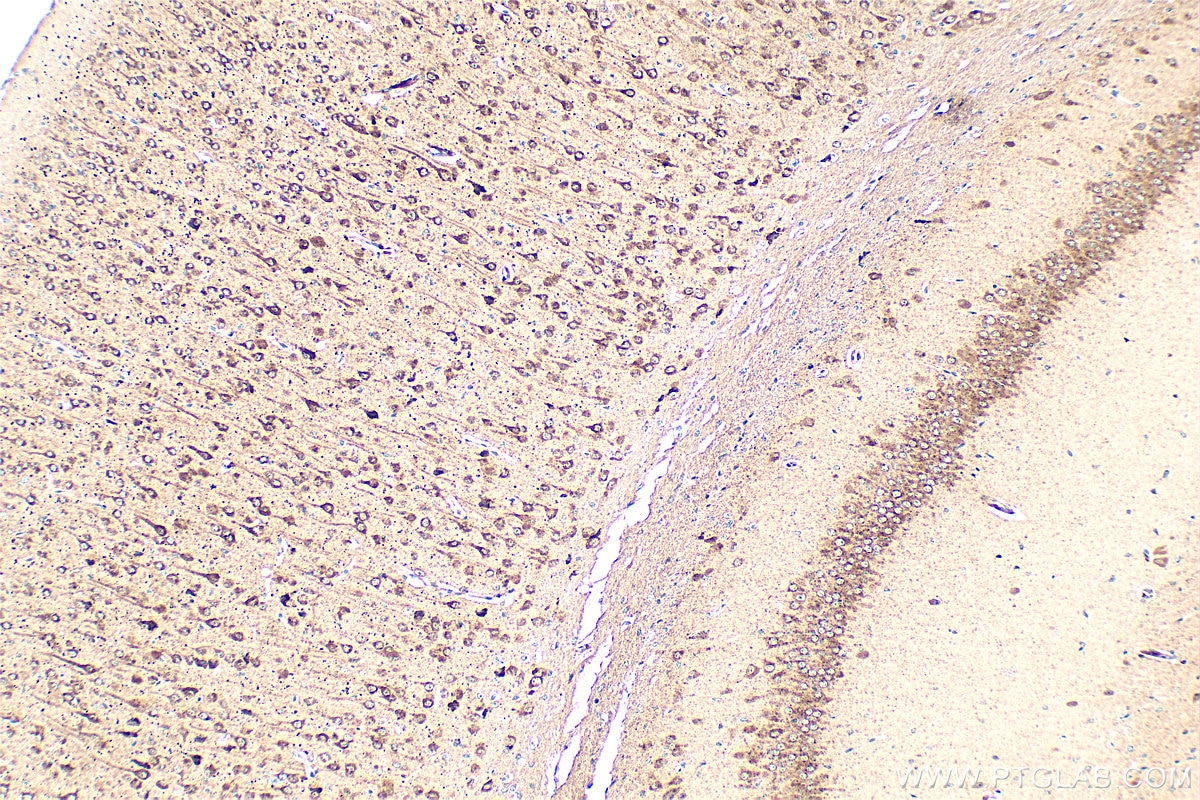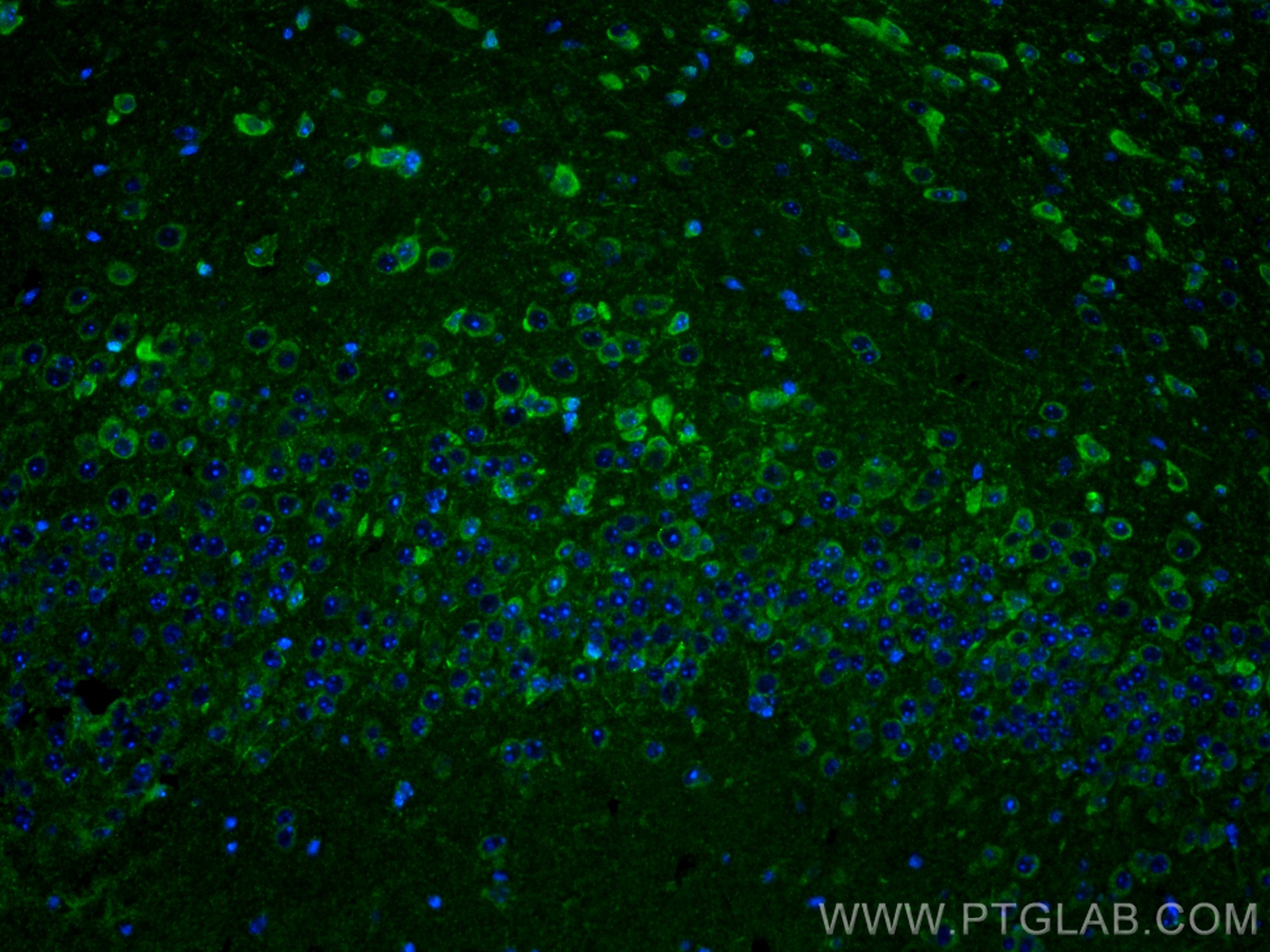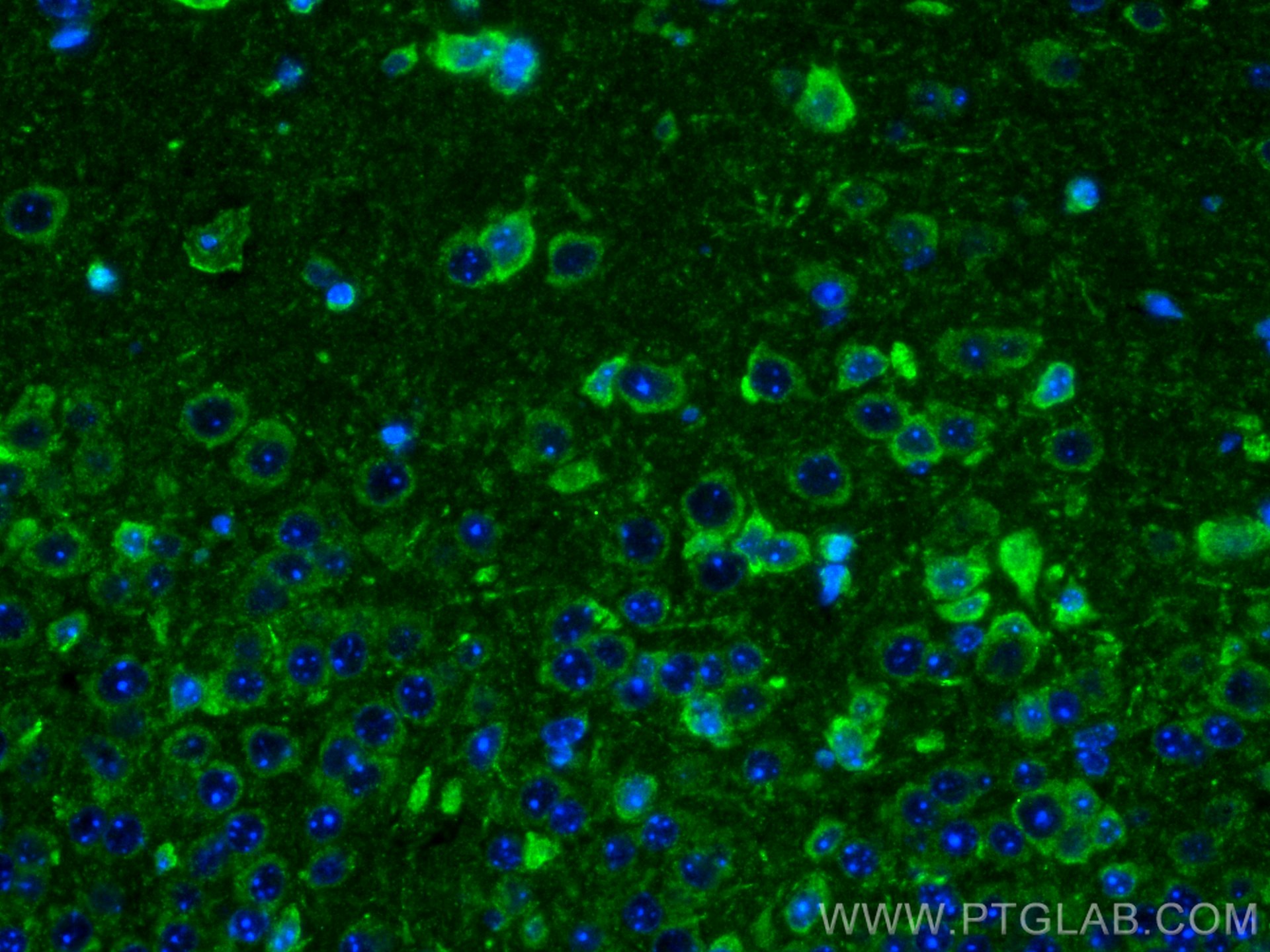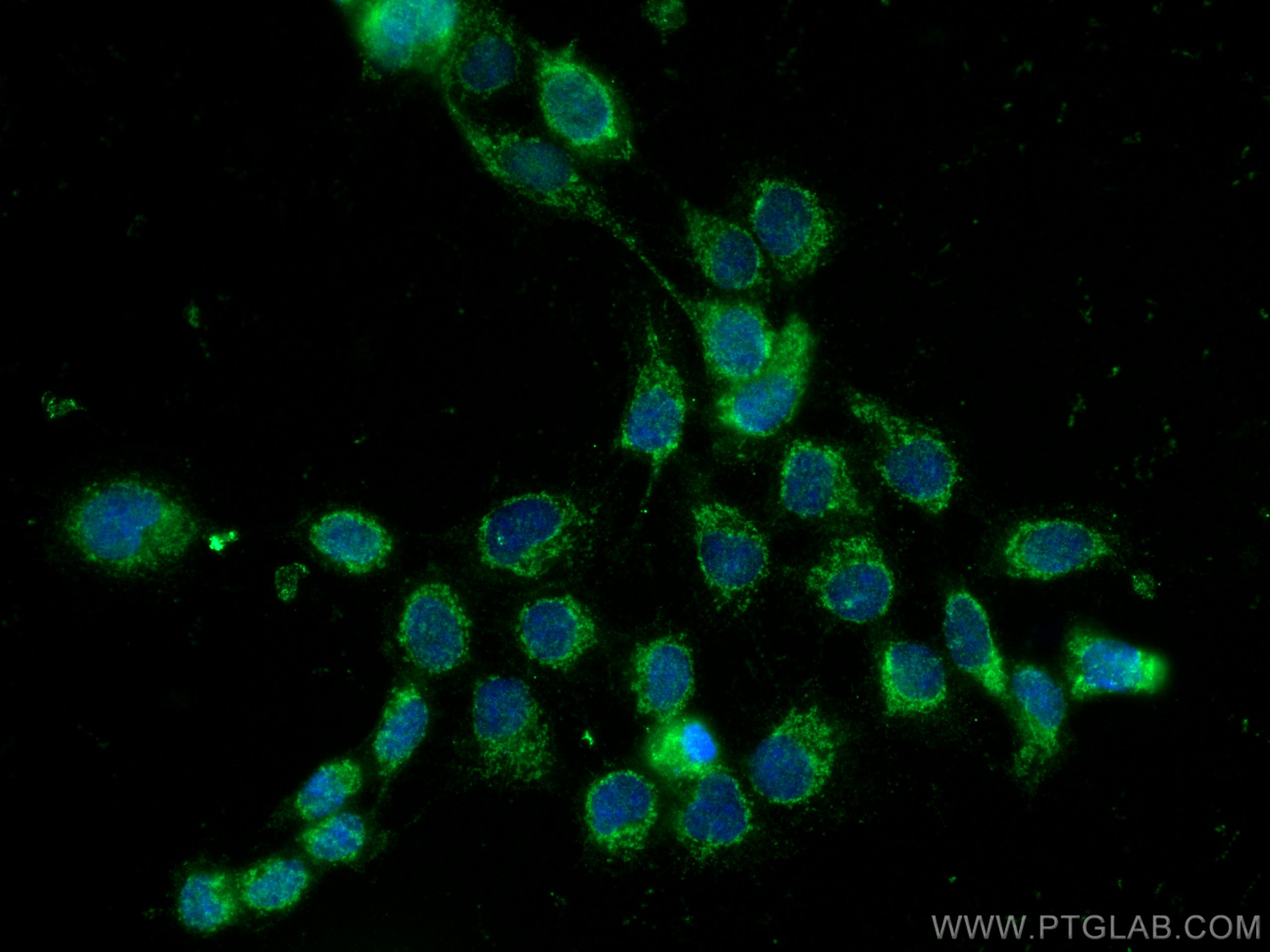- Featured Product
- KD/KO Validated
PLD3 Polyklonaler Antikörper
PLD3 Polyklonal Antikörper für WB, IHC, IF/ICC, IF-P, ELISA
Wirt / Isotyp
Kaninchen / IgG
Getestete Reaktivität
human, Maus, Ratte
Anwendung
WB, IHC, IF/ICC, IF-P, ELISA
Konjugation
Unkonjugiert
Kat-Nr. : 17327-1-AP
Synonyme
Geprüfte Anwendungen
| Erfolgreiche Detektion in WB | HEK-293-Zellen, HeLa-Zellen, HepG2-Zellen, L02-Zellen, SH-SY5Y-Zellen |
| Erfolgreiche Detektion in IHC | humanes Magengewebe, Maushirngewebe Hinweis: Antigendemaskierung mit TE-Puffer pH 9,0 empfohlen. (*) Wahlweise kann die Antigendemaskierung auch mit Citratpuffer pH 6,0 erfolgen. |
| Erfolgreiche Detektion in IF-P | Maushirngewebe |
| Erfolgreiche Detektion in IF/ICC | A431-Zellen |
Empfohlene Verdünnung
| Anwendung | Verdünnung |
|---|---|
| Western Blot (WB) | WB : 1:1000-1:4000 |
| Immunhistochemie (IHC) | IHC : 1:250-1:1000 |
| Immunfluoreszenz (IF)-P | IF-P : 1:50-1:500 |
| Immunfluoreszenz (IF)/ICC | IF/ICC : 1:50-1:500 |
| It is recommended that this reagent should be titrated in each testing system to obtain optimal results. | |
| Sample-dependent, check data in validation data gallery | |
Veröffentlichte Anwendungen
| WB | See 2 publications below |
| IF | See 1 publications below |
Produktinformation
17327-1-AP bindet in WB, IHC, IF/ICC, IF-P, ELISA PLD3 und zeigt Reaktivität mit human, Maus, Ratten
| Getestete Reaktivität | human, Maus, Ratte |
| In Publikationen genannte Reaktivität | human, Maus |
| Wirt / Isotyp | Kaninchen / IgG |
| Klonalität | Polyklonal |
| Typ | Antikörper |
| Immunogen | PLD3 fusion protein Ag11306 |
| Vollständiger Name | phospholipase D family, member 3 |
| Berechnetes Molekulargewicht | 490 aa, 55 kDa |
| Beobachtetes Molekulargewicht | 55 kDa |
| GenBank-Zugangsnummer | BC036327 |
| Gene symbol | PLD3 |
| Gene ID (NCBI) | 23646 |
| Konjugation | Unkonjugiert |
| Form | Liquid |
| Reinigungsmethode | Antigen-Affinitätsreinigung |
| Lagerungspuffer | PBS with 0.02% sodium azide and 50% glycerol |
| Lagerungsbedingungen | Bei -20°C lagern. Nach dem Versand ein Jahr lang stabil Aliquotieren ist bei -20oC Lagerung nicht notwendig. 20ul Größen enthalten 0,1% BSA. |
Protokolle
| PRODUKTSPEZIFISCHE PROTOKOLLE | |
|---|---|
| WB protocol for PLD3 antibody 17327-1-AP | Protokoll herunterladen |
| IHC protocol for PLD3 antibody 17327-1-AP | Protokoll herunterladenl |
| IF protocol for PLD3 antibody 17327-1-AP | Protokoll herunterladen |
| STANDARD-PROTOKOLLE | |
|---|---|
| Klicken Sie hier, um unsere Standardprotokolle anzuzeigen |
Publikationen
| Species | Application | Title |
|---|---|---|
Hum Mol Genet Pathological characterization of a novel mouse model expressing the PD-linked CHCHD2-T61I mutation. | ||
Cell Death Discov A signature of enhanced lipid metabolism, lipid peroxidation and aldehyde stress in therapy-induced senescence. | ||
ACS Appl Mater Interfaces FRET Nanosensor Based on DNA Tetrahedron for Visualizing PLD3 Fluctuation in Mouse Models of Alzheimer's Disease |
